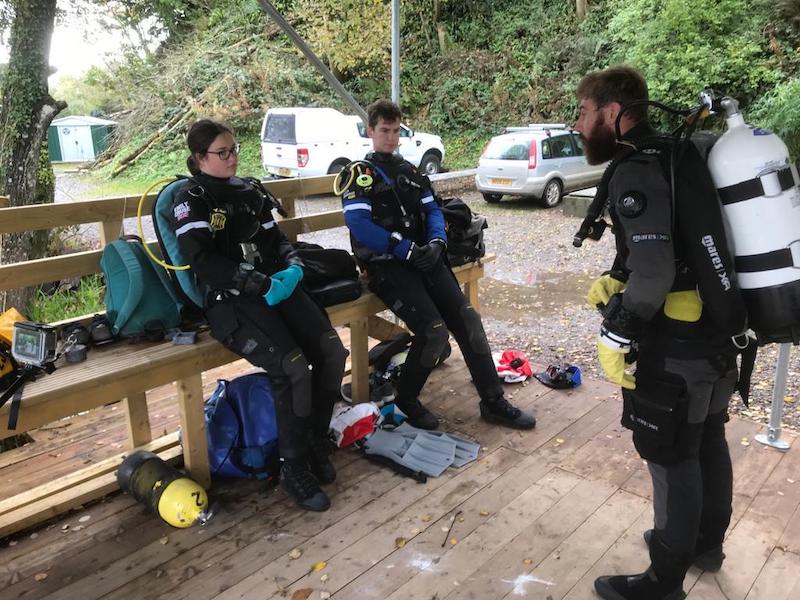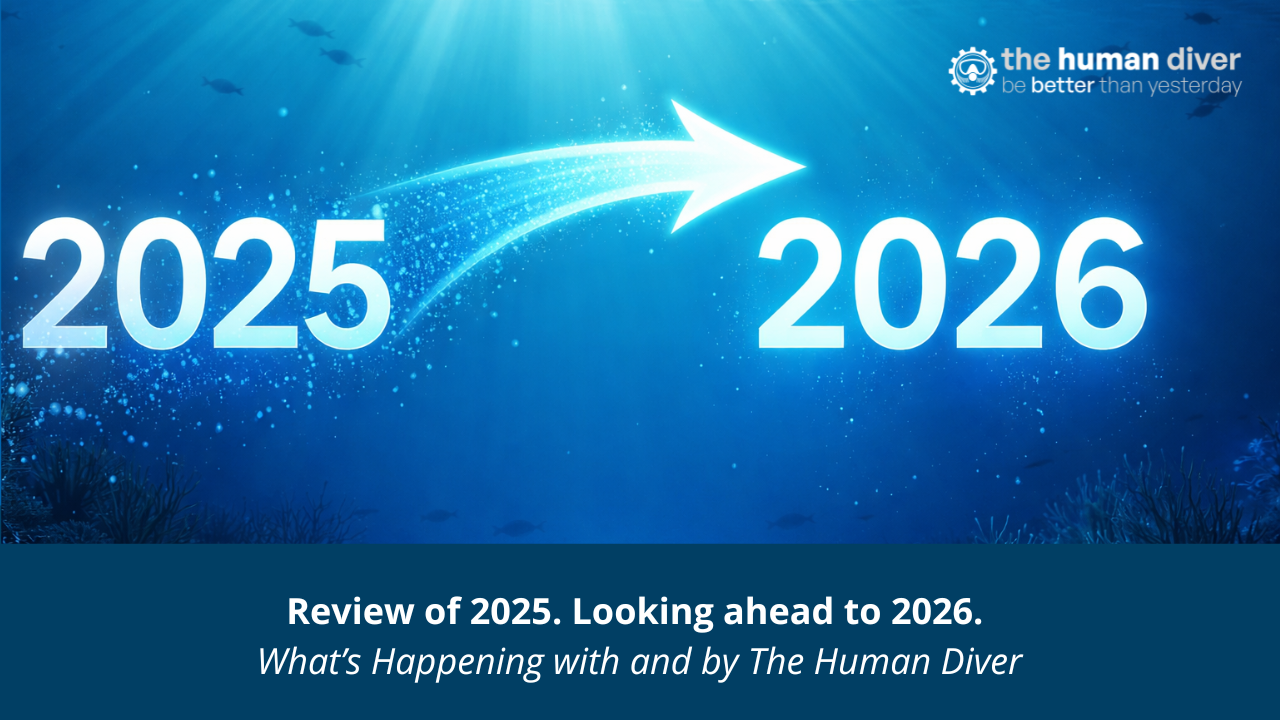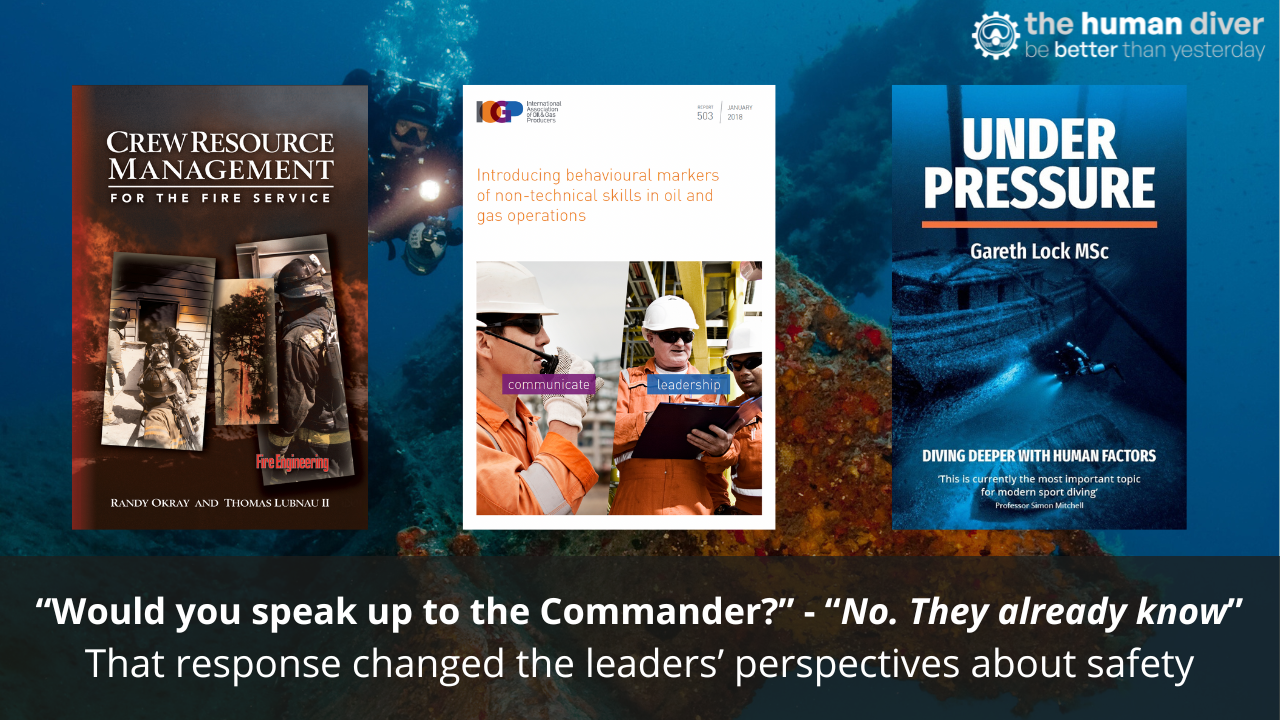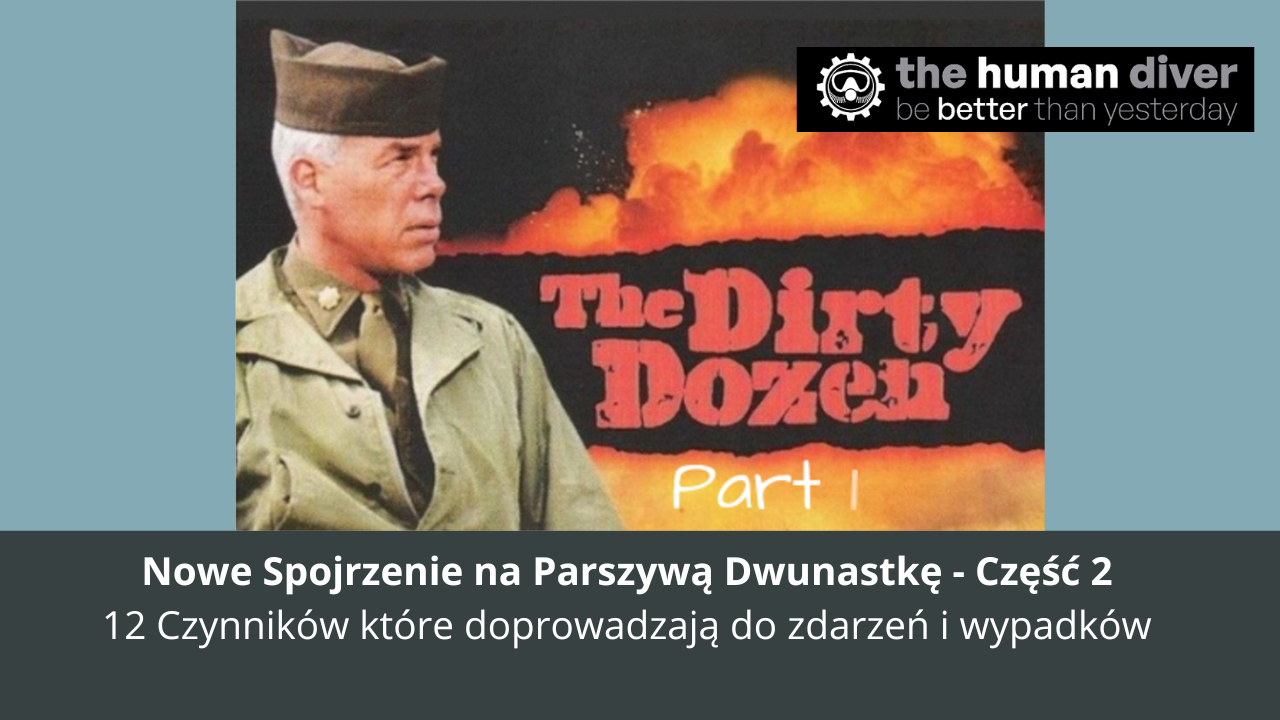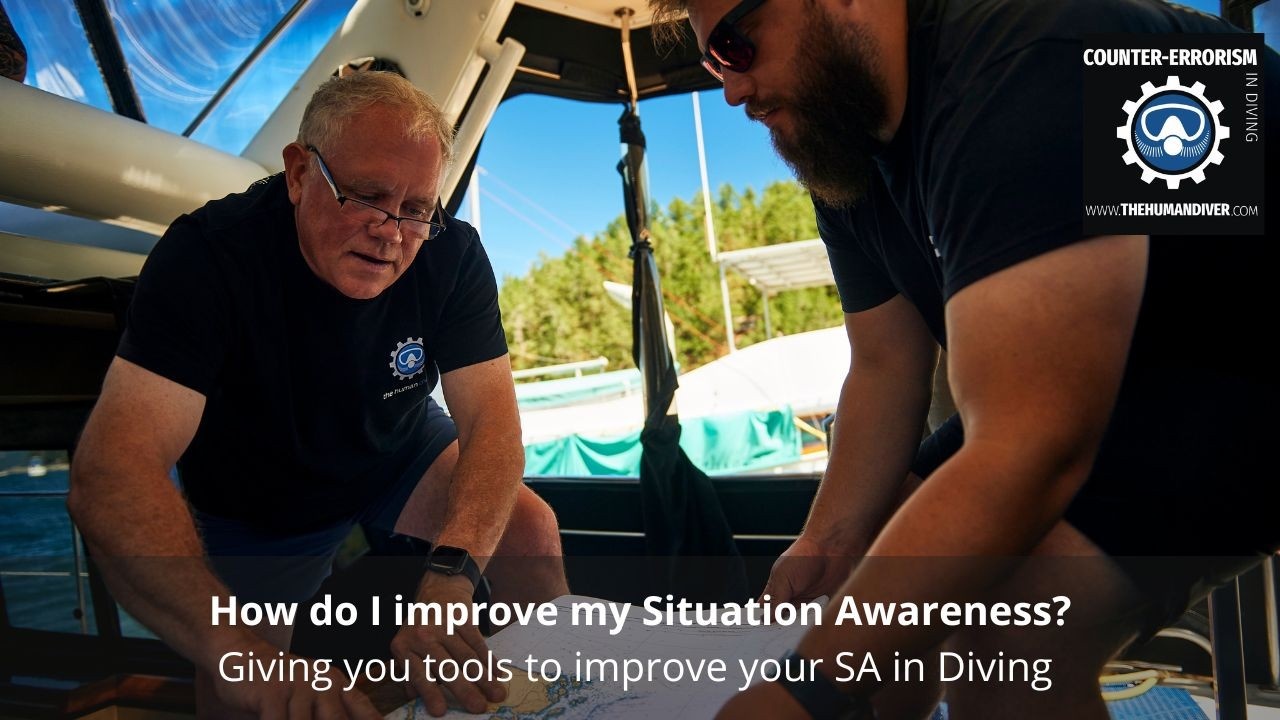
How do I improve my Situation Awareness?
Oct 19, 2022This article will give you, the diver, a basic idea of what Situation Awareness (SA) is, why it is important and how to recognise when it has been ‘lost’. Note that we don’t really ‘lose’ SA, we just have our attention focused somewhere which may mean we are not aware of other things that might be important and/or relevant.
The main aim is to give you some tools to gain and improve your SA.
What is Situation Awareness?
Mica Endsley, who has done a great deal of research on this subject, produced this simple model for describing SA:
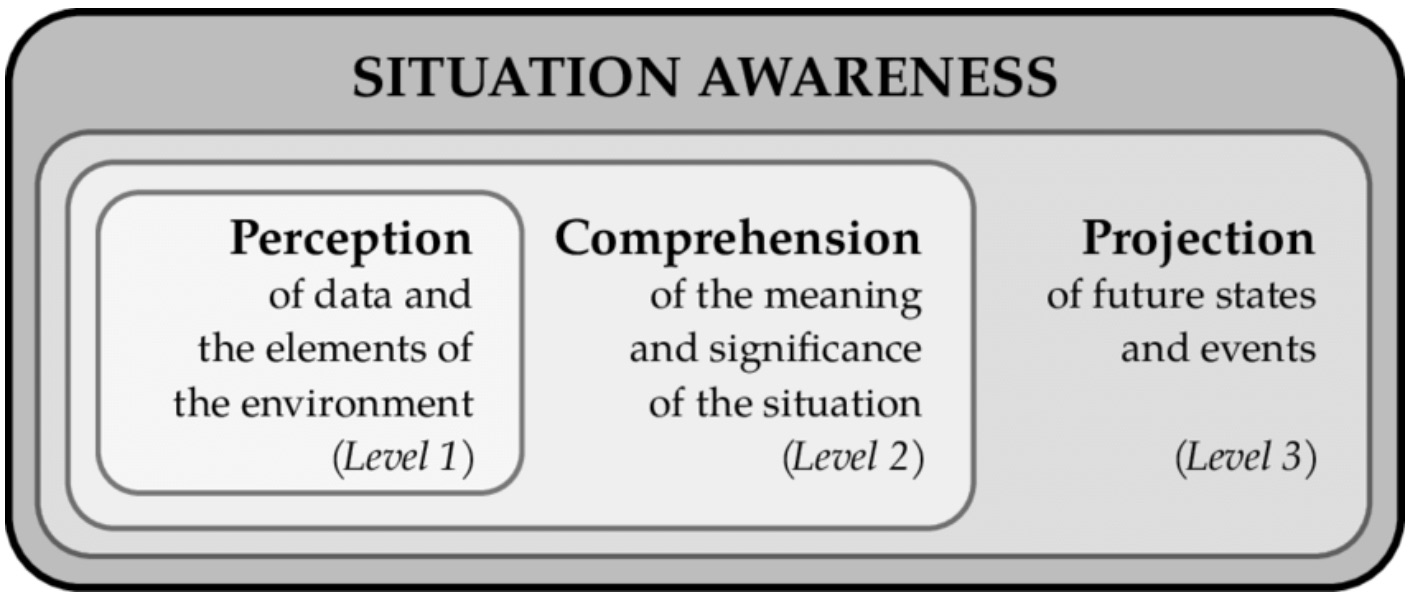
Perception: Just raw data coming into our brain via our senses. While this could be things we taste, smell, hear or feel through touch, the majority of data comes in via our eyes. Our eyes see billions of little bits of information and our brain automatically filters it according to what it thinks is relevant.
Comprehension: We make sense of that data to work out what it means right now. This is affected by our previous experience, memories, training and stories we’ve heard from others.
Projection: What is going to happen next? We’ve perceived and comprehended something but this final layer of SA is what separates novices from experts. The more mental models we have that we gain from training and experience (both our own and learning from others), the greater our ability to make better predictions about the future.
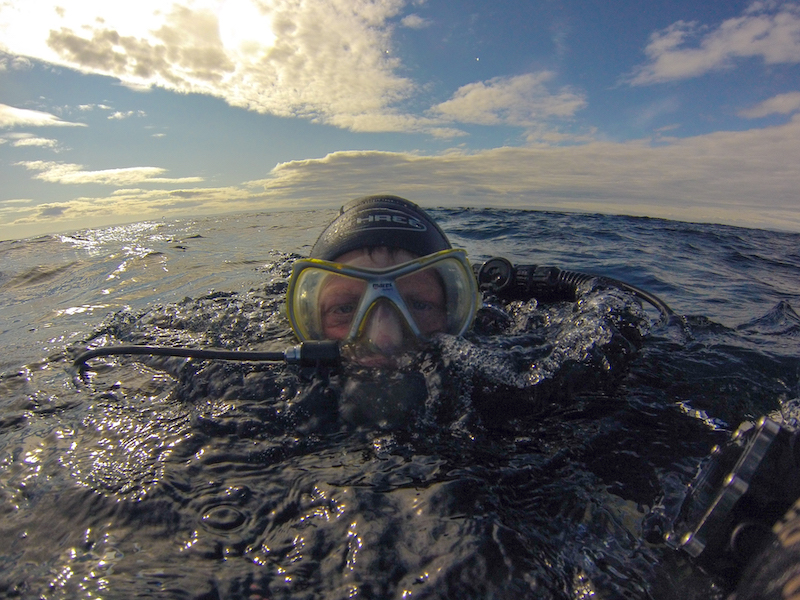
Here is an example of this process in action at my local shore site which is in an estuary and only really diveable at slack high water: Occasionally, after we’ve been in the water for a while, the water upstream will start to look murkier:
- Perception. This means that the tide has turned and the relatively dirty water from upstream has started to flow through the estuary to the sea.
- Comprehension. The more experience and knowledge we have about this situation, the more mental models we have and the better equipped we are to respond
- Projection. How much rain has there been recently? The more rain, the dirtier the water will become due to runoff into the rivers upstream. Is it a very high tide? If so then the current will pick up quickly and the visibility may get worse rapidly. We might need to keep our buddy closer than we normally would. We might want to take a different route back to the exit that is affected by the tidal change later. Knowledge and experience help our ability to predict what may happen next.
Why is Situation Awareness important?
Research done in the world of aviation during the 1990s found that problems with SA were a leading causal factor of mishaps and accidents as opposed to problems with decision-making or flight skills (Hartel, Smith, & Prince, 1991. Endsley 1995). While little if any formal research has been done directly on this subject in the world of diving, there is no reason to suspect the findings would be any different. Therefore if you can improve your own SA and that of your team, you are less likely to have bad outcomes.
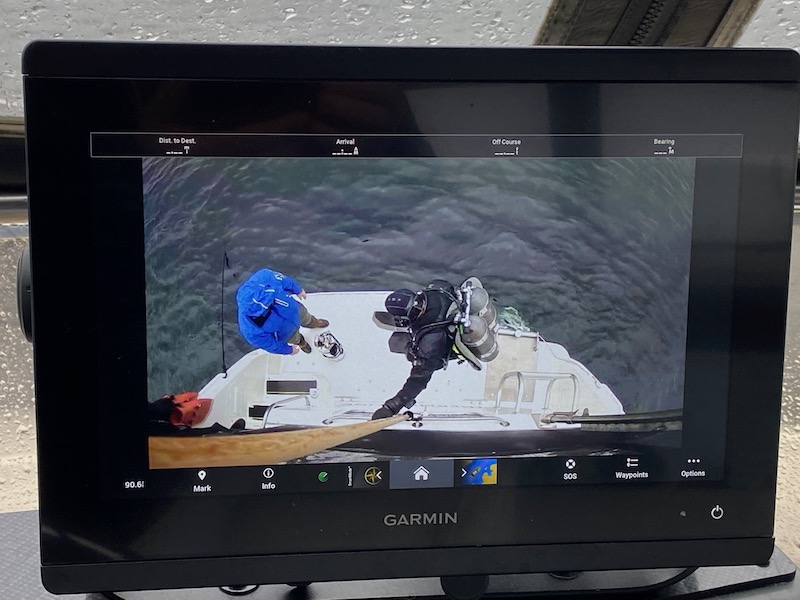
How do we know we’ve ‘lost’ SA?
- We are surprised by something or something happens that we weren’t anticipating.
- After we look up from spending a minute or so photographing an interesting fish, our buddy, who was right next to us, is nowhere to be seen. - Conflicting information
- Navigating a well-known site by pilotage, your compass is telling you you’re heading north but you’re convinced the shelf you’re swimming along is orientated east/west. - Confusion
- While swimming on a wreck ‘towards’ the bow in poor visibility, for some reason, we instead find ourselves at the stern. - Bad gut feeling
- Something is telling us ’this doesn’t feel right’ but we’re not sure why.
It is worth noting that the first three examples happen after you’ve already ‘lost’ SA, you just don’t realise until it’s already gone. The last point happens in real-time. So if you do find yourself having a ‘bad gut feeling’, stop and assess before moving on.

What can we do to improve our Situation Awareness?
There is no magic pill to make our brains better at SA. The phrase ‘pay more attention’ also isn’t very helpful as our attention span is limited. What we can do is try and figure out what we should be paying attention to and when.
- Briefings. Before diving, brief with your team. This helps with SA by sharing information before the dive about:
- Hand signals - If we talk about likely hand signals before the dive, it won’t be confusing when we see those hand signals underwater.
- Gases - If our buddy has less than us at the start, we won’t be surprised when they reach their turnaround gas before us if we have similar consumption rates. Also, if they have a different nitrox blend, we won’t be confused when they finish their deco before or after us.
- What people are wanting to get out from the dive - If we know that our buddy wants to photograph an octopus, we won’t get confused or even frustrated when we see them looking into every little nook and cranny they can find.
2. Gain experience. Go diving and get some variety! The more experience we have in different environments, different depths, different levels of visibility and current, the better equipped we’ll be to deal with novel situations. We’ll have more mental models to use to comprehend what is going on now and more importantly, project what is going to happen next.
3. Keep practising technical skills (DSMB deployment, accurate buoyancy and trim, emergency drills). By perfecting our technical skills, they become second nature and allow us more free capacity to pay attention to other things which may be crucial in an emergency scenario.
4. Debriefings with constructive feedback. We can expand our knowledge base and improve our mental models more quickly if we share our experiences with others. After diving, talk about things that went wrong and how to fix them and also talk about what went well and, importantly, why it went well. Stories are not just stories; they are the best invention ever created for delivering mental models that drive behaviour. These stories and lessons will feed into future briefings and so the cycle continues.
As a final note, as a way of keeping SA during dives, try and get into habits/routines. If we deliberately check our computer every couple of minutes, look at our buddy at regular intervals, read our SPG and work out how much gas we should have when we read it in 5 minutes' time, then these routines will start to become automatic and will happen without us thinking about them. This reduces the likelihood of us being surprised or confused. Developing these habits might take effort to start with but will quickly become normal.
Summary
Just because we see or sense something, it doesn’t mean we know what it means at the time. More importantly, we may not know what it means for the future. In the context of SA, the main difference between novices and experts is that experts are better able to predict the future and therefore are better able to avoid bad outcomes.
Research from other fields has taught us that problems with SA are often causal factors in accidents and mishaps. Therefore the more we can do to improve our SA, the more likely we are to avoid bad things happening to us and our dive team.
Go diving to keep building experience and keep practising technical skills. By perfecting technical skills, it enables us to have more capacity to absorb information - we can have more SA.
Brief to set the team up for success. Debrief to learn from each other. The more mental models we gain from telling stories in debriefs, the more SA we’ll have and the better equipped we’ll be in future to make good decisions and avoid bad outcomes.
Let’s do all we can to improve our SA. Strive to be experts.

Mike spent 20 years in the Royal Air Force, most of it flying on frontline squadrons. He now works as a flying instructor in the Royal Australian Air Force teaching young pilots to fly fighters. As well as being an accomplished instructor, he is an experienced flying supervisor and holder of a commercial pilot’s licence.
He has been an active diver since 2015 and has around 300 dives in his logbook from as far north as Iceland and as far south as New Zealand. He works part-time as a Dive Master and is also an active CCR diver. Wrecks interest him the most but he gets just as much satisfaction taking groups to see Grey Nurse Sharks at his local dive sites.
If you'd like to deepen your diving experience, consider taking the online introduction course which will change your attitude towards diving because safety is your perception, visit the website
Want to learn more about this article or have questions? Contact us.

